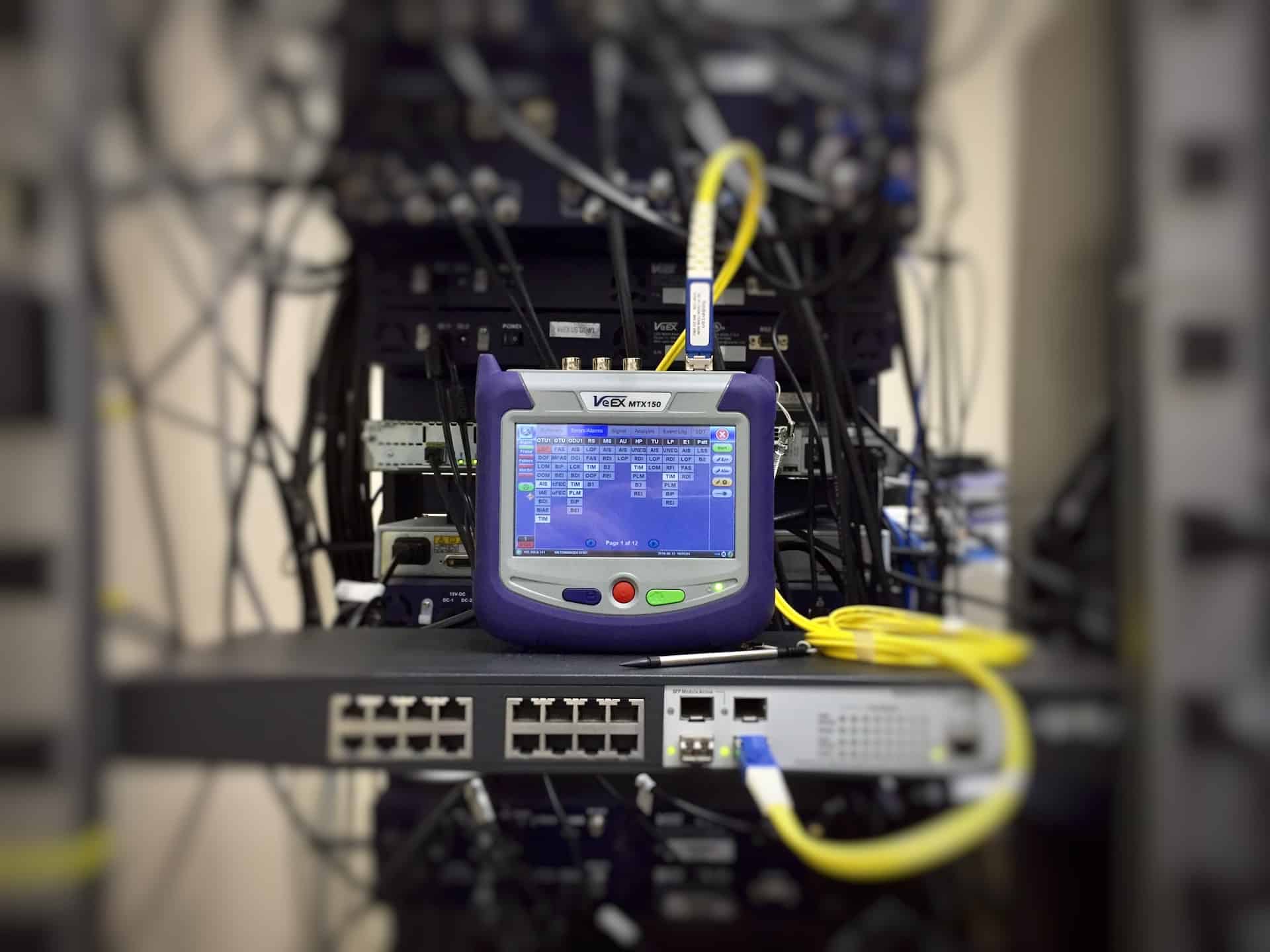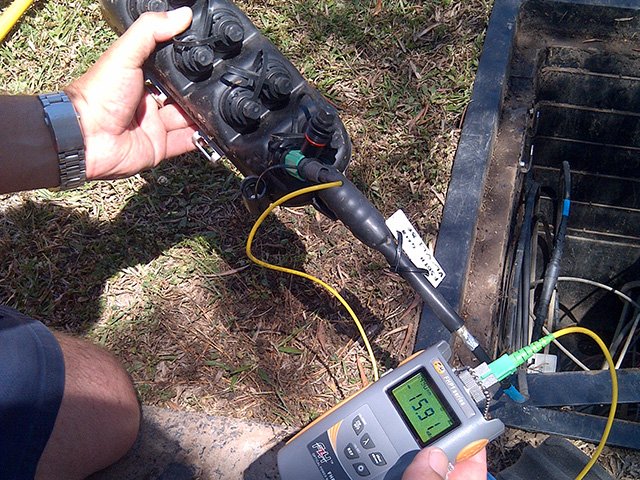Discover the Value of Optical Fiber Testing in Modern Telecommunications
In the realm of modern-day telecoms, the relevance of optical fiber testing can not be overstated, as it serves as the foundation for making certain network integrity and efficiency. What are the certain advantages that regular testing deals, and exactly how might it shape the future landscape of telecommunications?

Understanding Optical Fiber Screening
Optical fibre testing is a vital process in telecoms that makes certain the honesty and efficiency of fiber optic networks. This testing includes a series of treatments made to evaluate the physical and useful attributes of optical fibres - fibre testing equipment. Key criteria evaluated consist of optical power loss, data transfer capacity, and mistake location, which are crucial for preserving high-quality interaction links
The screening process commonly includes making use of specific equipment such as Optical Time-Domain Reflectometers (OTDR) and Optical Power Meters. OTDRs are utilized to identify and define mistakes, entwines, and adapters within the fibre, while power meters gauge the transmitted light signal strength to identify efficiency.
In addition, testing is performed at various stages, consisting of during setup, upkeep, and troubleshooting, to ensure that the network satisfies sector standards and operational needs. Compliance with requirements established by organizations like the International Telecommunication Union (ITU) and the Telecommunications Market Organization (TIA) is critical.
Benefits of Normal Testing
Routine screening of optical fibres yields numerous benefits that dramatically enhance network dependability and performance. Among the primary advantages is the early discovery of potential problems, such as breaks or destruction in the fiber, which can lead to expensive downtime if left unaddressed (robotic vision). By determining these issues proactively, telecoms companies can decrease solution interruptions and guarantee constant connection for their customers
Furthermore, routine screening aids to keep the honesty of signal quality. As optical fibres age, their performance can be affected by elements such as ecological problems and physical stress and anxiety. Routine assessments permit the tracking of signal loss and overall transmission efficiency, guaranteeing that the network operates at optimum degrees.
One more significant benefit is compliance with market standards. Routine screening sustains adherence to governing requirements, therefore mitigating lawful and economic threats connected with non-compliance. Furthermore, it improves the general life-span of the fiber facilities by facilitating prompt upkeep and repair services.

Usual Testing Methods
Checking optical fibers employs various techniques to ensure the stability and efficiency of telecoms networks. Amongst the most typical methods is Optical Time Domain Name Reflectometry (OTDR), which assesses the whole size of the fiber by sending a pulse of light and measuring the representations brought on by imperfections or breaks. This technique offers detailed info concerning the place and seriousness of mistakes.
One more prevalent method is the use of Optical Power Meters, which measure the quantity of light transmitted with the fibre. This method aids determine the loss of signal strength, making certain that it fulfills market standards. In Addition, Visual Fault Locators (VFL) are employed to identify breaks or extreme bends in the fibre by predicting a visible laser light right into the cord.
Insertion loss screening is also crucial, as it evaluates the loss of signal power resulting from links and interlaces within the network. The use of Polarization Mode Diffusion (PMD) screening evaluates the impact of fibre features on signal honesty.
Each of these approaches plays an important duty in maintaining the efficiency and reliability of optical fiber networks, inevitably adding to smooth telecommunications procedures.
Impact on Network Performance
The stability and efficiency of optical fiber networks straight influence general network performance. In modern telecoms, the effectiveness of data transmission relies greatly on the high quality of the optical fibers utilized. Any destruction in the fibre's problem-- whether because of physical damages, contamination, or extreme bending-- can cause enhanced depletion and signal loss, dramatically influencing information stability and rate.
Normal optical fibre screening is necessary to identify and remedy potential concerns before they show up as network failures or stagnations. Techniques such as Optical Time Domain Name Reflectometry (OTDR) and insertion loss testing enable professionals to gauge the efficiency of fibre web links precisely. These tests not only assess the physical condition of the useful reference fibers however likewise make certain conformity with sector standards, therefore safeguarding the network's reliability.
Furthermore, a well-maintained optical fibre network adds to decreased operational costs and boosted client satisfaction, as end-users experience fewer interruptions and greater information prices. Ultimately, the focus on extensive optical fiber screening methods acts as a cornerstone for sustaining durable telecoms framework, guaranteeing that service suppliers can fulfill the expanding needs for data transfer and connectivity in today's digital age.
Future Patterns in Examining
As we look ahead, advancements in innovation are positioned to reshape optical fiber testing in telecommunications. The increase of automation and man-made intelligence (AI) is expected to improve the effectiveness and precision of testing procedures. Automated screening systems can perform thorough assessments with minimal human treatment, significantly reducing the potential for mistakes and expediting time-to-deployment.
Furthermore, the combination of maker understanding formulas will certainly enable predictive maintenance, allowing network suppliers to foresee prospective concerns before they intensify right into failings. This aggressive approach not only improves network integrity however additionally optimizes operational prices.
Another emerging trend is the advancement of portable screening devices that supply real-time evaluation - ofda. These tools will empower technicians to execute on-site diagnostics quickly, helping with quicker resolutions and enhancing solution quality
The development of 5G networks even more necessitates the development of testing methods. As bandwidth needs increase, typical testing strategies may no more suffice. Cutting-edge services such as optical go to this website time-domain reflectometry (OTDR) and progressed spooky evaluation will certainly come to be vital in making sure the stability and efficiency of high-speed links.

Final Thought
Finally, optical fiber testing is necessary for ensuring the honesty and dependability of modern telecoms networks. Routine testing methods not only help recognize possible issues such as signal loss and mistakes however additionally add to improved network performance and customer contentment. As the need for seamless connection remains to expand, the fostering of advanced testing methods will play a critical role in maintaining top notch network criteria and over here sustaining the advancing landscape of telecoms.